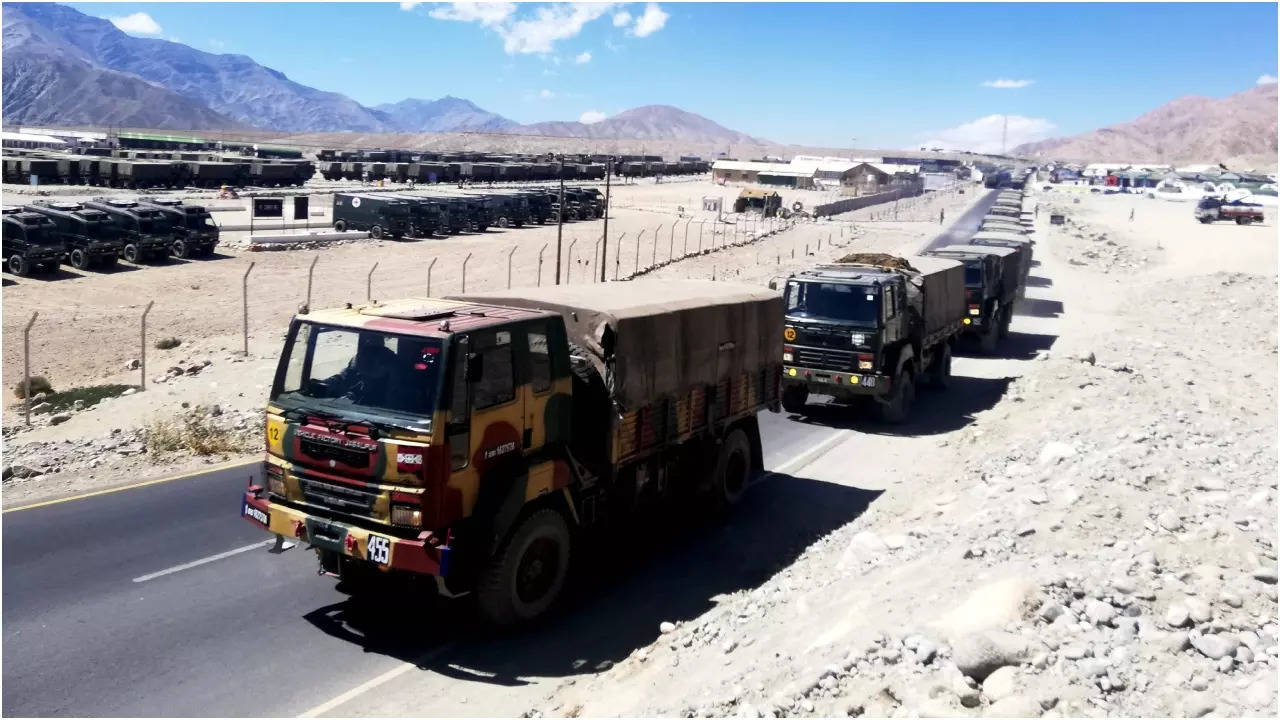[ad_1]
China did not agree to restore patrolling rights of Indian soldiers at the strategically-located Depsang Plains, towards the crucial Daulat Beg Oldie (DBO) and Karakoram Pass in the north, and the Charding Ninglung Nallah (CNN) track junction near Demchok, sources told TOI.
Though there was no immediate headway in the 19th round of corps commander-level dialogue at the Chushul-Moldo border meeting point on Sunday-Monday, sources said the talks were “better than the previous few rounds” with “some amount of agreement to move ahead” in strengthening confidence-building measures and not further increasing force-levels along the 3,488-km Line of Actual Control (LAC).
This was also reflected in the two sides issuing a joint statement on Tuesday, unlike the separate ones after the 18th round on April 23. India and China “agreed to resolve the remaining issues in an expeditious manner and maintain the momentum of dialogue and negotiations through military and diplomatic channels”, the joint statement said.
“In the interim, the two sides agreed to maintain the peace and tranquillity on the ground in the border areas,” it said. The two sides had “a positive, constructive and in-depth discussion on the resolution of the remaining issues” along the LAC in the western sector. In line with “the guidance provided by the leadership, they exchanged views in an open and forward looking manner”, it added.
India has been pressing for troop disengagement at Depsang and Demchok as the essential first step towards the eventual de-escalation and de-induction of the over 50,000 soldiers each forward deployed by the two armies with heavy weapon systems along the frontier in eastern Ladakh for over three years now.
The military talks were conducted ahead of the BRICS summit in South Africa on August 22-24, which both PM Narendra Modi and President Xi Jinping will be attending. Moreover, Xi is also slated to visit India for the G20 summit on September 9-10.
The platitudes in the joint statement on Tuesday were made after the earlier rounds as well. The fact remains that the People’s Liberation Army continues to block Indian soldiers at the “Bottleneck” or “Y-junction” area in the Depsang Plains, around 18-km inside what India considers its own territory, from going to their traditional patrolling points (PPs) 10, 11, 11A, 12, and 13. China, in fact, claims as much as 972 square km of territory in the region, which is quite near to its critical Western Highway G-219 connecting Tibet to Xinjiang.
Similar is the case with the CNN track junction near Demchok. Moreover, the no-patrol buffer zones that have come up largely on Indian territory after disengagement in areas like Pangong Tso-Kailash range, Galwan Valley and Gogra-Hot Springs have meant that Indian troops can no longer access 26 of their 65 PPs that begin from the Karakoram Pass in the north down to Chumar in the south in eastern Ladakh.
Apart from relentlessly strengthening its military positions and building new infrastructure all along the LAC over the last three years, China has also upped the ante along the Sikkim-Arunachal Pradesh frontier. This led to a clash between the rival troops at Yangtse in the Tawang sector on December 9.
[ad_2]
Source link


